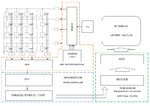gpascu
Newbie level 3
- Joined
- Dec 5, 2014
- Messages
- 3
- Helped
- 0
- Reputation
- 0
- Reaction score
- 0
- Trophy points
- 1
- Location
- plymouth uk
- Activity points
- 56
Hello everybody my project is to multiplexing an 4x4 up to 32x32 array of biosensors. My part is to design and build the electronic circuit. First taught was to use an FPGA platform and I already have an ALTERA DEO-NANO Cyclone 4 board for design test and evaluate my circuit. my knowledge of VHDL are not high and if every one can give me any advice or to put me into a direction will be very welcome. If another option to be used, like microcontrroler are much suitable for this I'll be happy to change. any site, book, related on my project will be a great help for me. Thanks.

